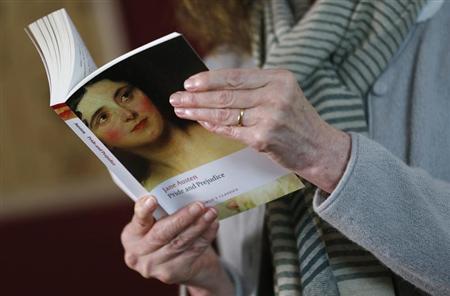London – The British Library has announced several pairs of glasses found in Jane Austen’s writing desk may reveal what caused the early death of the one of the world’s most-loved authors.
On July 18, 1817, novelist Jane Austen died at the age of 41. Much of Austen’s medical biography is murky, and how she died remains an enduring mystery. Historians, in the two centuries since, have dissected what little evidence exists.
In her later letters she complained of bilious attacks, facial aches and fever. Austen experts fingered several possible killers, including stomach cancer, Hodgkin’s lymphoma or an adrenal disorder known as Addison’s disease.
An article published Thursday on the website of the nationally run British Library offered a theory of a more dramatic sort: What if poison, not cancer or faulty glands, did in the author of “Sense and Sensibility?”
If so, blame neither foul plot nor gentleman assassin. The arsenic likely came from a tainted water supply or a medicinal mix-up, the library suggested; that is, of course, supposing the element caused Austen’s death. The claim has been subject to a fair bit of skepticism since Thursday, when the library published an article on its website linking her possible cataracts to arsenic.
The library’s reasoning hinged on spectacles. In 1999, the writer’s great-great-great-niece Joan Austen-Leigh donated a desk that belonged to Austen. The library discovered that the desk held three pairs of glasses, two tortoiseshell and one wire-framed. The British Library recently had the glasses examined, and found that the lenses were convex, suggesting a farsighted wearer.
In the published article, Sandra Tuppen, a curator at the library, asked: “Could it be that she gradually needed stronger and stronger glasses for reading because of a more serious underlying health problem?” Then, she wrote saying the variations in the strength of the British Library’s three pairs of spectacles may indeed give further credence to the theory that Austen suffered from arsenic poisoning, albeit accidental.
This was not the only evidence to suggest arsenic poisoning, the article noted.
Austen complained of skin discoloration and once wrote “black & white & every wrong color”, which may also be a symptom of accumulating arsenic in the body. And inadvertent arsenic poisoning in the 1800s was not unheard of.
Crime writer Lindsay Ashford, one of the first proponents of the arsenic theory, told the Guardian in 2011 that, “I think it’s highly likely she was given a medicine containing arsenic. When you look at her list of symptoms and compare them to the list of arsenic symptoms, there is an amazing correlation.”
